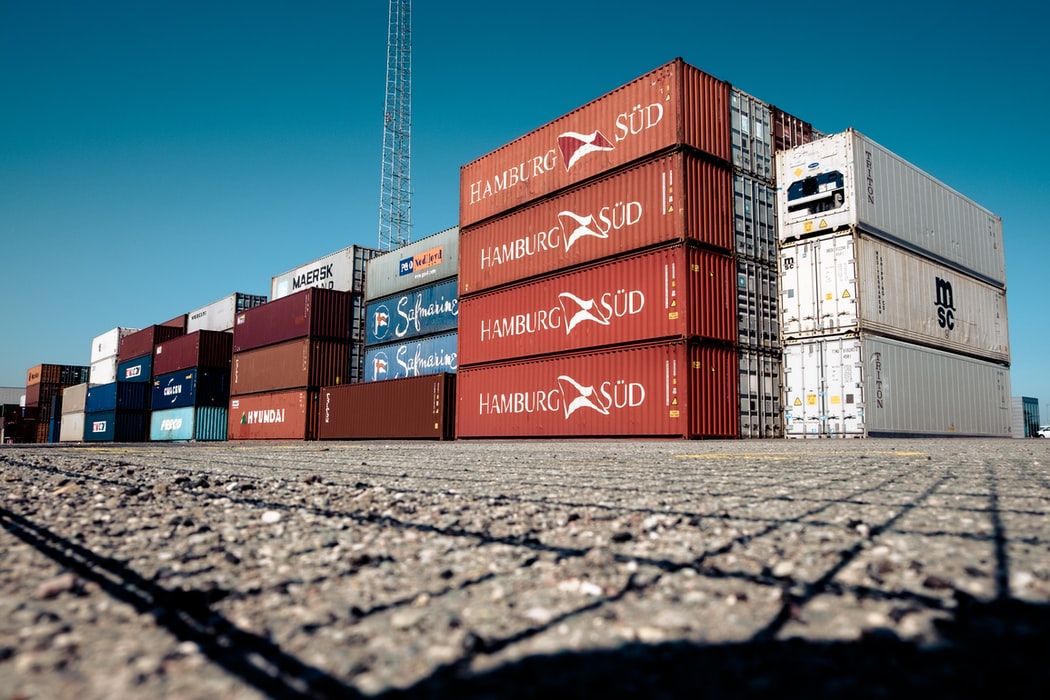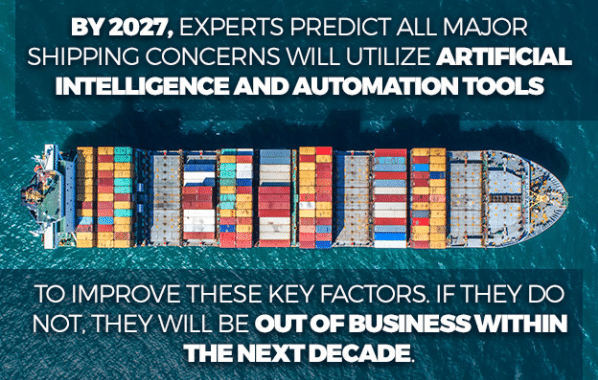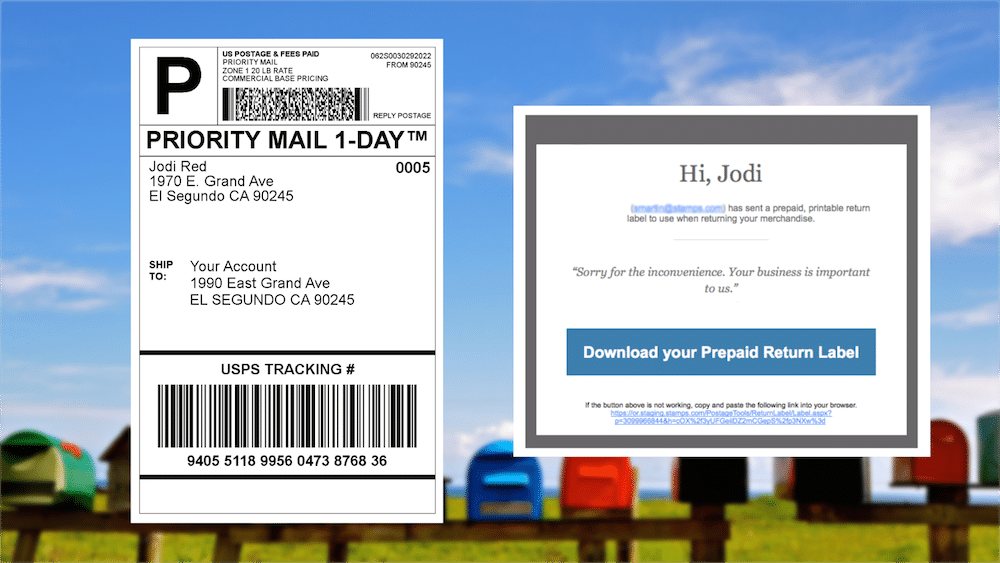E-commerce growth was unprecedented in 2020, and with the pandemic continuing in 2021, we can safely say that shopping online is the new norm. Online retailers looking to scale their businesses should look to automation to clear the hurdles of growth. Shipping automation can be especially useful in allowing businesses to focus on selling more and expanding their reach.
Consumer behavior has changed of late. The faster you accept the necessity of digitally transforming your shipping and logistics, the faster you’ll be able to adapt to it. Competition is growing tougher too. Customers will stick to those retailers who provide fast and hassle-free delivery. Automating your shipping processes can therefore have a huge business impact as it speeds up the entire process.
Automation in the workforce is a necessity in the digital age. If you’re filling out shipping labels, customs documents, and shipping insurance forms by hand for every order, your shipping process is incredibly inefficient. Automating these steps can save you and your customers considerable time and increase your profits.
If you plan to grow and scale your business, doing all these tasks manually can be daunting. The increase in order volume can quickly overwhelm you – unless you automate your shipping operations.
Luckily, there are numerous hardware and software options available to help you with repetitive tasks. These can free up time to focus on your sales and marketing efforts.
Source: PluginHive
Here’s what you need to know.
What is shipping automation?
Shipping automation is the process of streamlining commercial shipping procedures by using software, technology, or infrastructure. All the manual tasks in a fulfillment operation are removed to reduce human error. The goal is to eliminate the need for human labor to perform repetitive tasks and improve order processing time.
Shipping automation includes picking items from inventory for delivery, document handling, packing, and getting packages in transit to be delivered. If you’re feeling fancy you can invest in robotic process automation (RPA) and have robots and conveyor belts run your entire operation. There are also software options available to automate only parts of the shipping process.
As we make mundane tasks automatic, there may be higher upfront costs, but this will pay dividends in the long run. Automation can increase the efficiency of your supply chain and the volume of shipments that can be handled at one time. If implemented properly, shipping automation can revamp your entire eCommerce delivery strategy and lead to greater productivity.
Why should you automate shipping?
It doesn’t matter what size your eCommerce business is; the benefits of embracing automation are tangible and intangible.
- It saves time. If you’re looking to scale your business, you can’t have your team waste time on repetitive tasks that a computer can do. It’s better to utilize their capabilities in a value-added role.
This time saved can be spent on decision-making. Maybe you need to promote your website or focus on digital marketing – basically, doing anything more productive than filling out shipping labels and customs forms.
- It increases your capacity to grow. Taking care of the shipping process manually is inefficient and hurts your bottom line, revenues, and sales. Spending resources on a poor-quality shipping process can hinder your ability to take on new customers. You might win more business, but you won’t be able to handle it successfully. Larger shipping volumes dictate the need for automated shipping.
- Shipping automation helps warehouse managers prioritize their time. Often warehouse managers like to have a final look at a critical delivery. It could be a high-value delivery or a fragile delivery with special handling requirements. If your shipping processes are automated, the system will flag such a shipment for the warehouse manager to check.
- Automated shipping helps you track your inventory accurately and efficiently. It helps you get your inventory out the door as quickly as possible and even helps to keep it safe.
- Shipping times are critical in this competitive era. Customers want their orders yesterday, and your competition is offering same-day shipping. If you automate tasks in logistics and shipping, you can significantly improve shipping times.
The customer’s experience is critical to the success of your business and you do not want a delayed shipment to ruin it. A cumbersome shipping process won’t help you with competitive shipping timelines.
- Shipping automation software can consolidate data and give you insight into demand. Also seasonal fluctuations and how successful your current shipping practices are. This can help you make decisions for your supply chain for the future and inform you about shifting customer trends.
- Automation helps you save money. With more accuracy and fewer errors, you save on costs of returned or incorrectly delivered shipments. Autonomous shipping also reduces the need for human labor. Resources can be used to hire people who can help generate a higher ROI and scale your business.
Source: Air Sea Containers
Here are some areas you can improve using shipping automation to turn your supply chain operations into a well-oiled machine.
Shipping automation rules
You can use shipping rules to streamline operations. Shipping automation software has a user-friendly interface that can help you with setting shipping rules easily. You can select the conditions and actions for shipment rules. Shipment rule automation follows the logic of “if/then” statements.
Your automation is as strong as the rules you set. It can help you specify different couriers for different countries as well as assign courier services as per order weight. This saves your team time and reduces room for human error.
Automation can also simplify shipping operations and reduce costs. You can create automation rules to find the most cost-effective shipping option for each product. To do it manually for every shipment might be a hassle, but a computer can easily segregate shipments according to weight, insurance, country.
You can set shipping rules for document handling and have taxes and duties included in the shipping cost for international deliveries. Also, ensure all international deliveries have the right shipping documents attached to ensure a smooth delivery. Your shipping rules can inform the right shipping service for pickup too.
Shipping labels
Filling in shipping labels day in and day out is soul-crushing, tedious, almost torturous. Your business processes need to be anything but. Creating and printing shipping labels should be automated. Let the onus of the right address be on the customer. The software will pick up the address from there, and your shipping software will print that out on a label in one click.
This saves time and reduces the margin for error. If any mistake is made, it’s probably because the customer put down the wrong address. There is greater accuracy and no missing details in the address label. You could also offer the same service to customers wanting to return their goods. Customers should be able to create return shipping labels with the click of a button.
Source: Stamps.com
Insurance
There is always a chance your shipment gets lost or damaged. While it’s good to trust your delivery services, it’s not wise to assume every parcel will be delivered safely. There’s a chance it might not and this is not a risk you should take.
If your parcel gets lost or damaged, the courier service is likely to pay you some money that will not compare to the cost of the shipment. Let’s not even talk about what a lost or damaged parcel does to your credibility.
We recommend applying for insurance for expensive items to ensure you at least get the cost of the goods back. If you meet the terms and conditions of the courier company, you will also receive the shipping amount back.
Some carriers offer insurance or include it, but you can also hire a third-party insurance agency. Insurance claims are handled faster by such companies and they offer facilities to insure every shipment that leaves your warehouse at cheaper prices.
Automate your decision to insure high-value shipments by adding a shipping rule. Set insurance as mandatory for certain goods. The automation software will then automatically book the relevant insurance as part of the shipping procedure.
Customs and tax documents
International shipping is what nightmares are made of. Online retailers detest it, but if you want to grow, the international market is a gold mine, despite the hassle it involves. Customs at the country of departure and arrival can both be troublesome. There’s a list of shipping document requirements that differs from country to country. Your shipment can be held at customs or returned if your shipping documents are not in order.
You need a commercial invoice, customs declaration, certificate of origin, and packing list at the very least. If you happen to ship foodstuff or perishable items, the list has a couple more certificates added. If any of the required documents are missing, your shipment will find itself tangled in customs. Despite the 21st century and all possible communication solutions, a small parcel stuck in another country is more of a hassle than you can imagine.
Use automated shipping to ensure you do not have to deal with any international incidents and your system generates accurate customs forms for each shipment.
Source: Avalara
Inventory management
Automated shipping can allow you to generate picking lists and packing slips. These can help you pick orders from your warehouse faster and pack them more efficiently. Connect your shipping software to your warehouse management system to instantly update your inventory as soon as an order is packed.
Also, make sure your website updates when an order is shipped. This can show potential customers that stock is low and will often influence purchasing decisions.
When your inventory dips below a certain threshold, it can help to know when it’s time to replenish it. Make your business more agile by automating your eCommerce orders so it can help you keep a check on inventory.
Shipment tracking emails
While your customers would love to know the status of their order, it’s not feasible for you to email or text them at every step of the fulfillment process. However, if you automate this process, your customers will be grateful for the improved customer experience.
Shipping software allows you to create templates for personalized messages to every retail customer at every step of the shipping process. This results in transparency and increases customer satisfaction. It reduces the load on your customer service department too, as customers don’t need to call to confirm order status.
96% of people say a positive delivery experience is the most important factor in whether they will return to an eCommerce website to shop again.
Source: MailCharts
Automate now!
It can be overwhelming to grow a business. A bigger business means greater volumes, and the only thing that can help with those is an automated shipping solution. Old school methods can work well for small retailers, but if you want to make it to the big league, you need to leverage automation.
There is always the challenge of training your employees to use it, but most of the software solutions on the market are easy to use. In any case, software test periods are always available before you start paying.
Most shipping solutions are available on an affordable “software as a service” (SaaS) basis. The vendor takes a monthly or annual payment and manages the software and hardware for you.
If you’re willing to invest more and want a few robots in the warehouse, make sure you get an RPA process assessment first. Robotic process automation is a long-term journey of creating change to transform your business.
The advantages of automated shipping cannot be ignored. If you want to reduce the manual labor burden on your resources, save time, increase customer satisfaction, and maximize your potential to scale, shipping automation is the answer.









